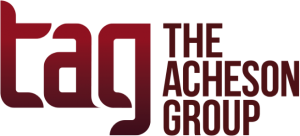 One of the keys to a successful project is having a set of requirements that are well defined and stable. We’ve all worked on projects where a lack of defined and controlled requirements has led to scope creep which result in schedule delays. Continue reading
One of the keys to a successful project is having a set of requirements that are well defined and stable. We’ve all worked on projects where a lack of defined and controlled requirements has led to scope creep which result in schedule delays. Continue reading
Category Archives: Design@Risk™
#98 – MANAGING RISK FOR REUSABLE MEDICAL DEVICES – PAUL J. KOSTEK
 Endoscope Manufacturers and Health Care Facilities to Increase Following UCLA’s “Superbug” Outbreak
Endoscope Manufacturers and Health Care Facilities to Increase Following UCLA’s “Superbug” Outbreak
The National Law Review June 24, 2015
This headline is one of many about the superbug resulting from the use of contaminated endoscopes. There have been deaths around the country and this has resulted in a quick release by the FDA of rules for the reprocessing reusable medical devices. Continue reading
#92 – USABILITY AND ITS IMPACT ON RISKS – HOWARD M. WIENER
 How we design and implement systems and processes can play a large role in determining their usability. Poor usability can contribute to avoidable risks. This post addresses the need to employ risk identification and mitigation techniques in the course of designing things in order to minimize the probability of negative outcomes.
How we design and implement systems and processes can play a large role in determining their usability. Poor usability can contribute to avoidable risks. This post addresses the need to employ risk identification and mitigation techniques in the course of designing things in order to minimize the probability of negative outcomes.
#76 – SIXTY PERCENT (60%) OF QUALITY ISSUES ARE CAUSED BY DESIGN FAULTS – ROXANN DAWSON
 In order to improve business performance, manufacturing companies need to reduce the levels of non-conformance and attendant failure costs stemming from poor product design and development. Failure costs generally make up the largest cost category in a manufacturing business and include those attributable to rework, scrap, warranty claims, product recall and product liability claims. This represents lost profit to a business and as a result, it is the area in which the greatest improvement in competitiveness can be made. Continue reading
In order to improve business performance, manufacturing companies need to reduce the levels of non-conformance and attendant failure costs stemming from poor product design and development. Failure costs generally make up the largest cost category in a manufacturing business and include those attributable to rework, scrap, warranty claims, product recall and product liability claims. This represents lost profit to a business and as a result, it is the area in which the greatest improvement in competitiveness can be made. Continue reading
#66 – AN APPROACH TO EVALUATE AND MANAGE SUPPLY CHAIN RISK – DAVID ACHESON AND JENNIFER MCENTIRE
 In today’s food and beverage industry, everyone has a supply chain that they rely on. And with that comes risk. You may be staking your brand reputation on the quality and safety of products or ingredients you are sourcing from somewhere that is not under your direct control. In short, you are relying on someone else to do things right, and inheriting risk if they don’t. Congress recognized that sometimes you rely on suppliers to control risk, which puts supplier management into the bucket of a “preventive control” and thus part of the Food Safety Modernization Act. Continue reading
In today’s food and beverage industry, everyone has a supply chain that they rely on. And with that comes risk. You may be staking your brand reputation on the quality and safety of products or ingredients you are sourcing from somewhere that is not under your direct control. In short, you are relying on someone else to do things right, and inheriting risk if they don’t. Congress recognized that sometimes you rely on suppliers to control risk, which puts supplier management into the bucket of a “preventive control” and thus part of the Food Safety Modernization Act. Continue reading